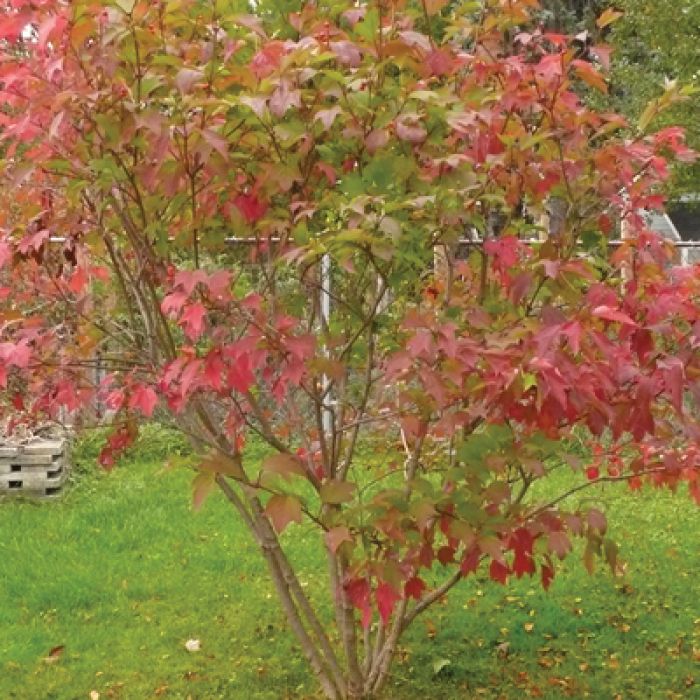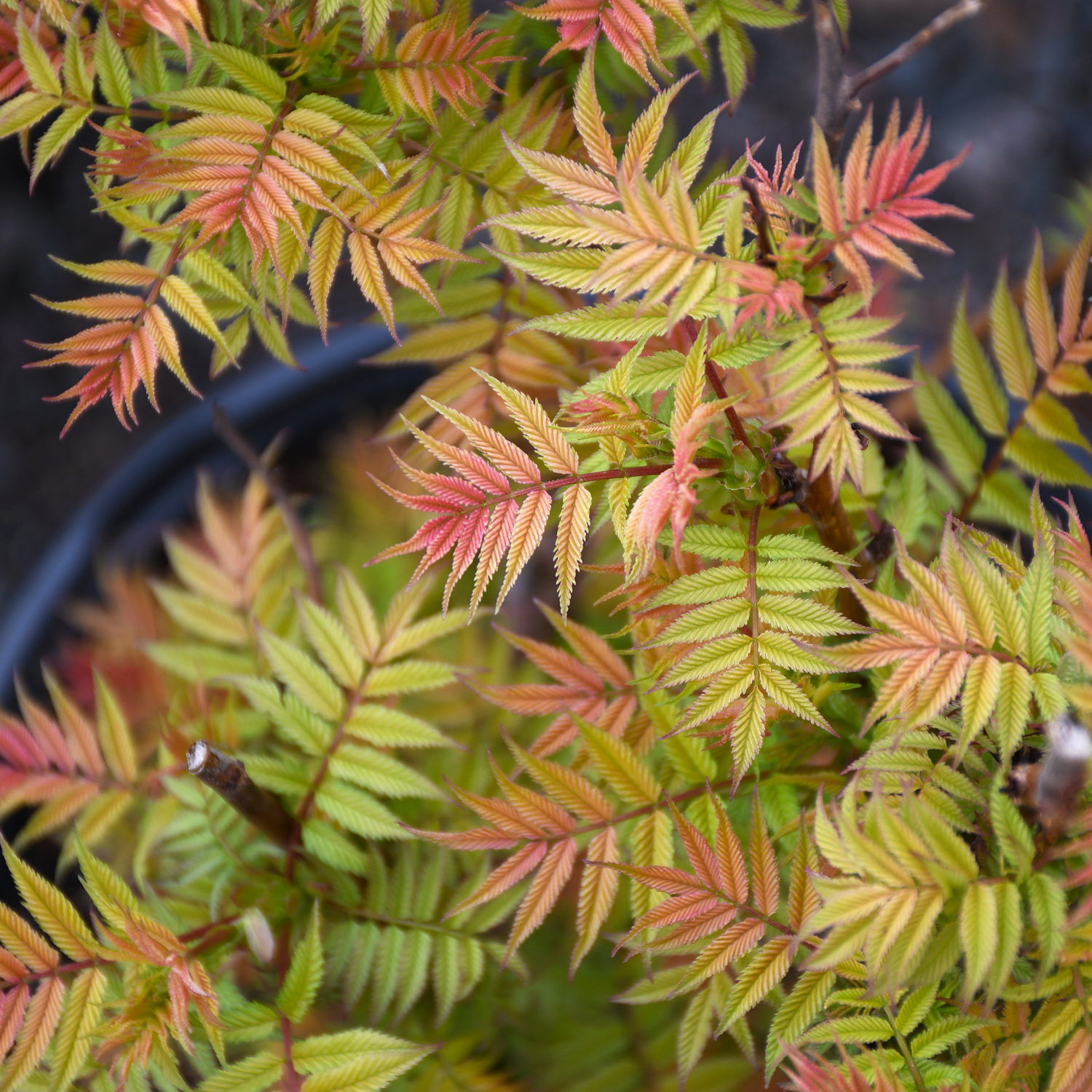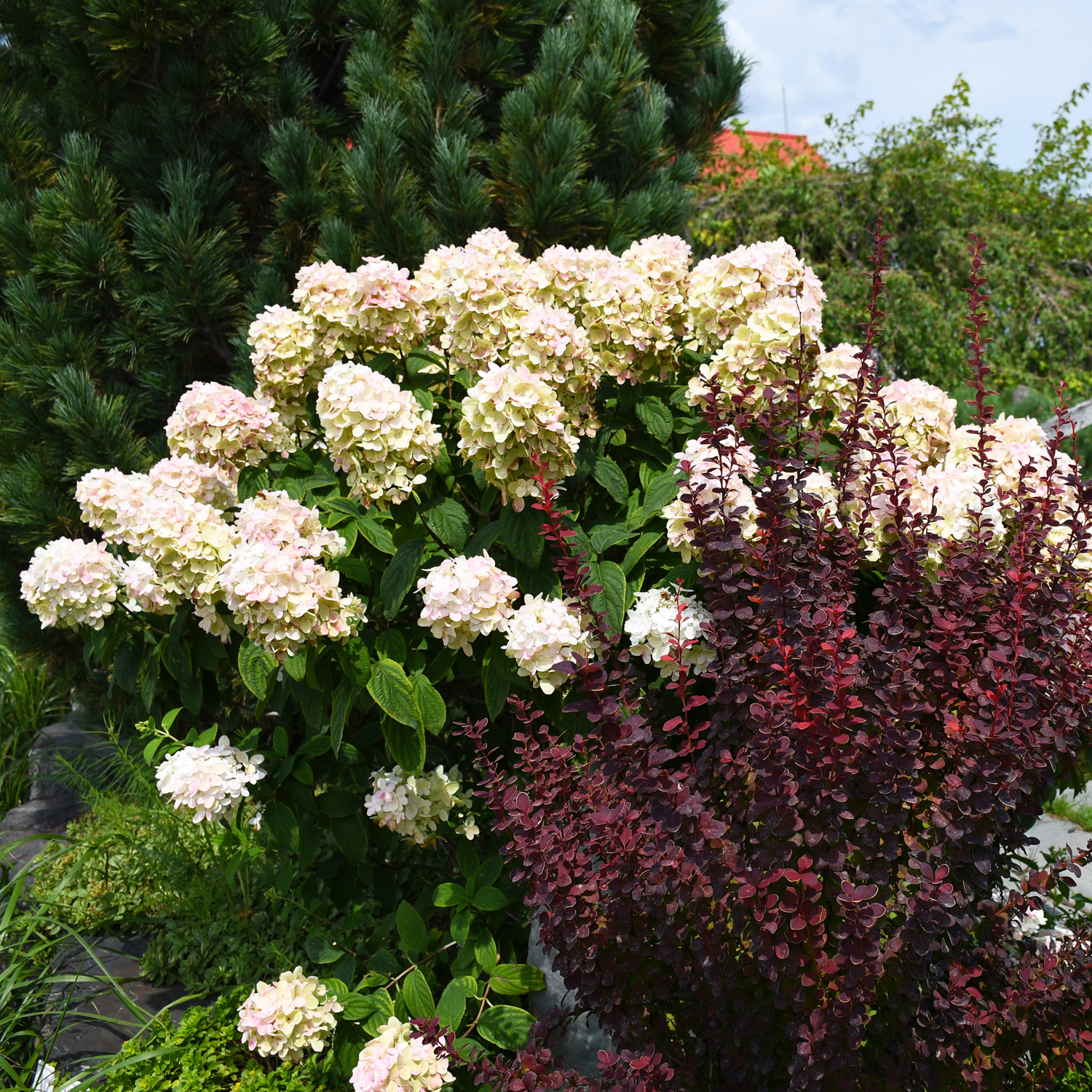Viburnum, American Cranberrybush 'Redwing®'



- Sun Preference
- Full-Sun, Part-Sun
Description
An improved selection of this beautiful native species with rich, red leaf tips in spring; very showy pinwheel clusters of flowers in spring followed by abundant brilliant red berries; spectacular fall color; denser habit, faster growing than the species
- Zone: 2-7
- H 8-10' x W 6-8'
#2 Pot Size: 2 Gallon, 8 3/4” Diameter
#5 Pot Size: 5 Gallon, 10 3/4” Diameter
#7 Pot Size: 7 Gallon, 14” Diameter
Minnesota's Largest Selection of Shrubs
Elevate your landscaping with Gertens' unmatched variety of shrubs! Selecting the right shrubs for your backyard can enhance its beauty and functionality. Consider factors like sunlight, soil type, and mature size when choosing shrubs. For sunny areas, flowering shrubs like roses or hydrangeas can add color and charm. In shady spots, opt for shrubs like azaleas or hostas. Evergreen shrubs provide year-round interest and privacy, while deciduous shrubs offer seasonal color changes. At Gertens, we offer a wide selection of shrubs to suit every backyard need.
Details
Height: 10 feet
Spread: 10 feet
Sunlight:![]()
![]()
Hardiness Zone: 2a
Other Names: Red Wing, American Cranberrybush
Description:
An improved selection of this beautiful native species with rich, red leaf tips in spring; very showy pinwheel clusters of flowers in spring followed by abundant brilliant red berries; spectacular fall color; denser habit, faster growing than the species
Ornamental Features
Redwing Highbush Cranberry is covered in stunning white lacecap flowers held atop the branches in late spring. It has attractive dark green foliage which emerges brick red in spring. The large serrated lobed leaves are highly ornamental and turn an outstanding crimson in the fall. It features an abundance of magnificent scarlet berries from late summer to late winter. The smooth gray bark and gold branches add an interesting dimension to the landscape.
This plant is primarily grown as an ornamental, but it's also valued for its edible qualities. The round sour berries are most often used in the following ways:
- Preserves
Landscape Attributes
Redwing Highbush Cranberry is a dense multi-stemmed deciduous shrub with an upright spreading habit of growth. Its average texture blends into the landscape, but can be balanced by one or two finer or coarser trees or shrubs for an effective composition.
This shrub will require occasional maintenance and upkeep, and should only be pruned after flowering to avoid removing any of the current season's flowers. It is a good choice for attracting birds to your yard, but is not particularly attractive to deer who tend to leave it alone in favor of tastier treats. It has no significant negative characteristics.
Redwing Highbush Cranberry is recommended for the following landscape applications;
- Accent
- Mass Planting
- Hedges/Screening
- General Garden Use
- Orchard/Edible Landscaping
Planting & Growing
Redwing Highbush Cranberry will grow to be about 10 feet tall at maturity, with a spread of 10 feet. It has a low canopy with a typical clearance of 1 foot from the ground, and is suitable for planting under power lines. It grows at a fast rate, and under ideal conditions can be expected to live for 40 years or more. While it is considered to be somewhat self-pollinating, it tends to set heavier quantities of fruit with a different variety of the same species growing nearby.
This shrub does best in full sun to partial shade. It prefers to grow in average to moist conditions, and shouldn't be allowed to dry out. It is not particular as to soil type or pH. It is highly tolerant of urban pollution and will even thrive in inner city environments. This is a selection of a native North American species.
| SKU | Container Size |
| S3515 | #5 Container (5 Gallon) |
| S3517 | #10 Container (10 Gallon) |
* Not all container sizes may be available at this time. See store for details on specific container size availability.
More Information
| Gerten Grown Plants | Gerten Grown Plants |
|---|---|
| Sun Preference | Full-Sun, Part-Sun |
| Mature Height (Range) | 5 - 10 feet |
| USDA Hardiness Zone | 2, 3, 4, 5, 6, 7 |
| Common Family Name | Viburnum |


